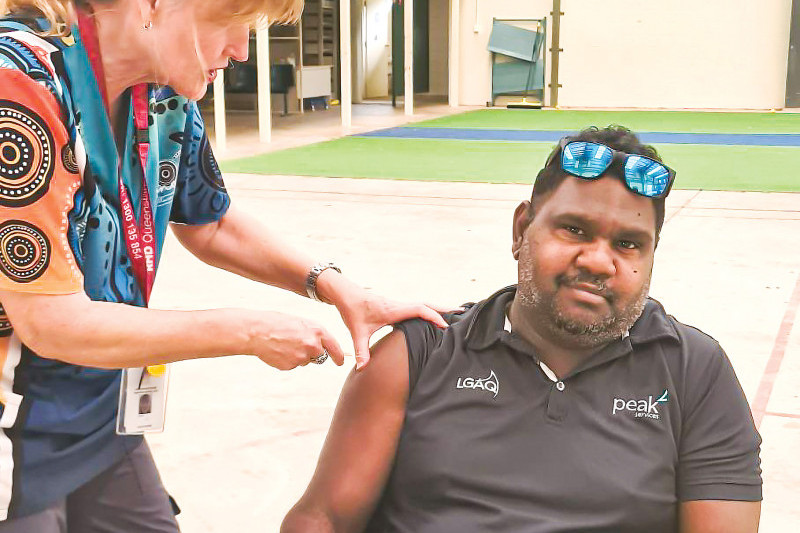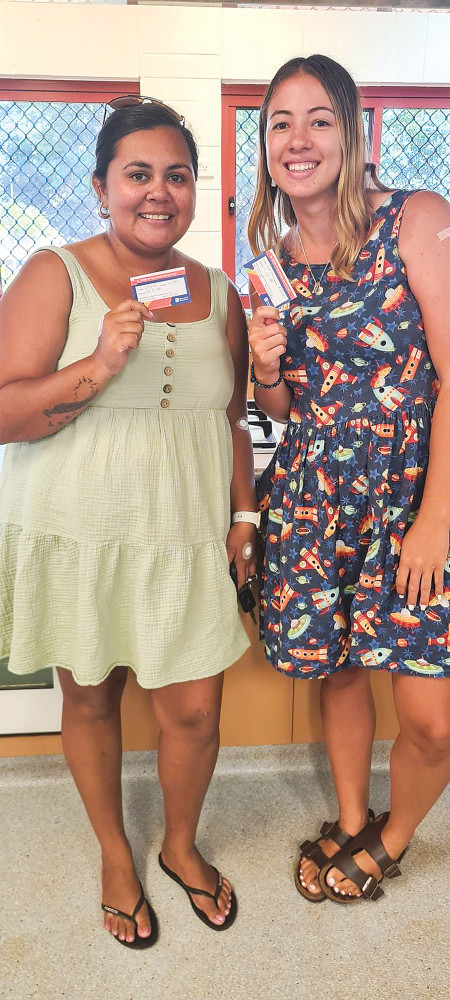General News
29 October, 2021
Vaccination lags put First Nations communities at risk
CONCERNS remain that COVID-19 vaccination gaps in far north indigenous communities might not be able to be closed by the time Queensland’s borders re-open on December 17.

Any outbreaks in the vulnerable, often remote, communities would be devastating, with immunity levels below the national average and lower life expectancy.
COVID could also severely put at risk the generational survival of local languages, arts and culture in many of the areas through the possible deaths from the virus of their elders and community custodians.
Health services have been busy campaigning for residents to take up vaccinations as quickly as possible, setting up mobile clinics and boosting existing services but have been hampered in some areas by vaccination supplies falling short.
In some communities even the first dose level is alarmingly low – for instance earlier this week, a vaccination rate table published by Torres and Cape Hospital and Health Service (TCHHS) showed the double vaccination rates in the communities of Kowanyama, Coen, Hope Vale, Aurukun, Laura and Cooktown all below 50 per cent, with Cooktown at just 34 per cent.
Even taking into account that GPs and pharmacies are also administering vaccinations, the low rates are still of concern.
In the Torres Strait, while few islands are also low on the TCHHS double dose rates, many others are doing much better, recording well above 60-70 per cent fully vaccinated.
Elida Faith, Labor’s candidate for the seat of Leichhardt who visited Kowanyama this week, has questioned what she said is a lack of support from the Federal Government, which has the main responsibility for vaccine supplies and rollout.
“It’s incredibly concerning to see the vaccine gap in many Indigenous communities,” Ms Faith said.
“Queensland Health has been doing a great job in trying to boost Indigenous vaccination rates before we open up here in Queensland but support from the Federal Government has left a lot to be desired,” she said.
“At the start of the vaccine rollout the Prime Minister promised that all Indigenous Australians over the age of 55 would be fully vaccinated before Winter. Now here we are, approaching summer and there are still people in this age bracket not vaccinated.”
The official in charge of Queensland’s vaccination rollout, Police Deputy Commissioner Shane Chelepy said lagging vaccination rates in some regions could mean they will not hit the 80 per cent double-dose target by the time the state opens up on December 17.
Because of population concentrations, a state level of eighty per cent will certainly not translate 80 per cent in many regional areas such as the far north. Currently the overall level of double vaccination is around just 45 per cent in the Cape and Torres Strait health area, compared with above 61 per cent for the Cairns and Hinterland area.
“I’m less comfortable that all areas across the state will hit those targets and I know there’ll be some of those areas — unless we see a massive turnout this week — there’ll be some of those areas that won’t hit that target,” Mr Chelepy said.
Dr Marlow Coates from the TCHHS told ABC’s Radio National that achieving higher vaccination rates in some communities means a more targeted community driven approach.
“We need to move in and engage with those communities, be led by their leaders, their councils, their prescribed body corporate leaders, the patriarchal, matriarchal minds and get down to the one-on-one family or the religious line discussions to have factual discussions about the vaccine.”
But while there are worryingly low levels of double vaccination rates in some of the communities, in others there has been encouraging success.
TCHHS Acting Chief Executive Dean Davidson commended the communities of Pormpuraaw on Cape York and the Kubin community on Moa Island in the Torres Strait for achieving milestones of above 70 per cent.
“At Pormpuraaw, more than 77 per cent of the eligible population aged 12 years and over is now fully vaccinated with two doses of a COVID–19 vaccine, while the fully vaccinated percentage at Kubin this week also hit 71 per cent for the 12 year and overs,’’ he said. Those rates would have increased since, with the vaccination drive continuing in the
communities.
But Ms Faith believes the Commonwealth should be doing more to help. “Where is the Federal Government? They aren’t rolling out a campaign to boost vaccination rates, they’ve left that to the State Government. So what are they doing?”



